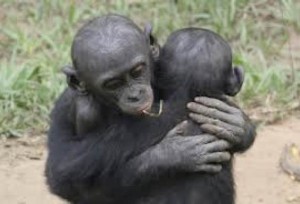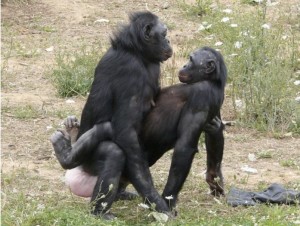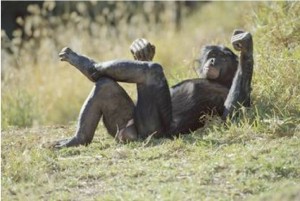 The Alpha Male, the real man, a man’s man, a warrior, a stand-up guy. It doesn’t matter what you call him, he’s a leader, the guy others look to for motivation, inspiration, and often with a hint of jealousy. He’s the man women want, without intention the center of attention.
The Alpha Male, the real man, a man’s man, a warrior, a stand-up guy. It doesn’t matter what you call him, he’s a leader, the guy others look to for motivation, inspiration, and often with a hint of jealousy. He’s the man women want, without intention the center of attention.
Well, that is how the theory went. And who developed the theory? Self assessed Alpha Males. Dana Ardi challenges this paradigm in her 2013 book “The Fall of the Alphas”.
“In recent years, new generations of ethnologists and comparative psychologists have … reconsidered the findings of their predecessors. New theories have pulled away the veneer that protected the Alpha paradigm.
Today, scientists realise that both male and female behaviour is profoundly influenced by environment, and is often the consequence of socialised learning. They have also criticised the idea that a field researcher could elicit valid data from observing animals, whether primates in a zoo or chickens in a coop. When scientists carried out their first primate studies, zoos squeezed as many animals as they could into cramped enclosures that provided limited resources for the animal’s health and well-being. In nine cases out of ten, the inevitable result was a stressful, highly unnatural environment. Is it any wonder those animals were so aggressive and competitive?
Even as zoos modernised and updated, they were still in the business of creating artificial environments where animals couldn’t hunt, mating was choreographed, and caretakers provided food. Coming up with theories on primate behaviour based on observations of animals in captivity is the equivalent of coming up with theories abut human behaviour based on observations of prisoners on death row.
Scientists are even calling into question the earliest primate studies on natural free-ranging populations that their peers carried out in the wild. Anthropologist and primatologist Sarah Blaffer Hrdy went so far as to theorise that the traditional concept of the Alpha male is nothing more less than a crude form of projection by male scientists. The idea that there’s a single top male that gets to mate with all the females and dominate the other males, she speculated, had more to do with the fantasy lives of all those early evolutionary biologists, many of whom were elite males themselves.
Maybe that’s one reason why renowned anthropologist Louis Leakey preferred to sponsor female observers of great apes in the wild. He handpicked Jane Goodall to study chimpanzees, Diane Fossey to study gorillas, and Birute Galdikas to study orang-utans. Their contemporary studies of primates in their natural habitats have led to far less sexist assessment of the roles played by males and females. Many of the most interesting studies came about from observing the behaviour of bonobos who, like chimpanzees, share 99 percent of the same DNA as human beings. (At the time of Leakey’s death in 1972, he was in the process of arranging for a fourth woman, Toni Jackman to launch a project observing bonobos.
 The dynamics of bonobos society shattered the myth of the Alpha male as an innate primate characteristic, and therefore a natural paradigm for human society. Even though male bonobos are generally larger and stronger than the females, bonobo groups are matriarchies. Scientists have observed few aggressive encounters between male and female bonobos, and when it happens, the females band together to discourage excessively aggressive behaviour by individual males.
The dynamics of bonobos society shattered the myth of the Alpha male as an innate primate characteristic, and therefore a natural paradigm for human society. Even though male bonobos are generally larger and stronger than the females, bonobo groups are matriarchies. Scientists have observed few aggressive encounters between male and female bonobos, and when it happens, the females band together to discourage excessively aggressive behaviour by individual males.
 Bonobos use sex to create bonds, and to reduce stress and aggressiveness. Female bonobos use their sexuality to control male members of the pack. Whereas chimpanzees commonly attack males from neighbouring packs who wander into their territory, bonobos initiate sexual contact with scouts from other packs. Both male and female bonobos have been observed engaging in homosexual behaviour as a bonding activity.
Bonobos use sex to create bonds, and to reduce stress and aggressiveness. Female bonobos use their sexuality to control male members of the pack. Whereas chimpanzees commonly attack males from neighbouring packs who wander into their territory, bonobos initiate sexual contact with scouts from other packs. Both male and female bonobos have been observed engaging in homosexual behaviour as a bonding activity.
As for the status of males in a bonobo group, it’s determined not by strength or aggressiveness, but by the status of their mothers. The bond between mothers and sons remains strong and enduring throughout the animal’s lives. Fans de Waal, the Dutch primatologist and ethologist, characterises bonobos as altruistic, compassionate, empathetic, and patient.  Contemporary ethologists suggest that if you don’t have to be an aggressive, physically intimidating, chest pounding Alpha male to lead a pack of bonobos, then just maybe you don’t have to be one to lead a pack of people, either.”
Contemporary ethologists suggest that if you don’t have to be an aggressive, physically intimidating, chest pounding Alpha male to lead a pack of bonobos, then just maybe you don’t have to be one to lead a pack of people, either.”
From “The Fall of the Alphas” by Dana Ardi 2013.
